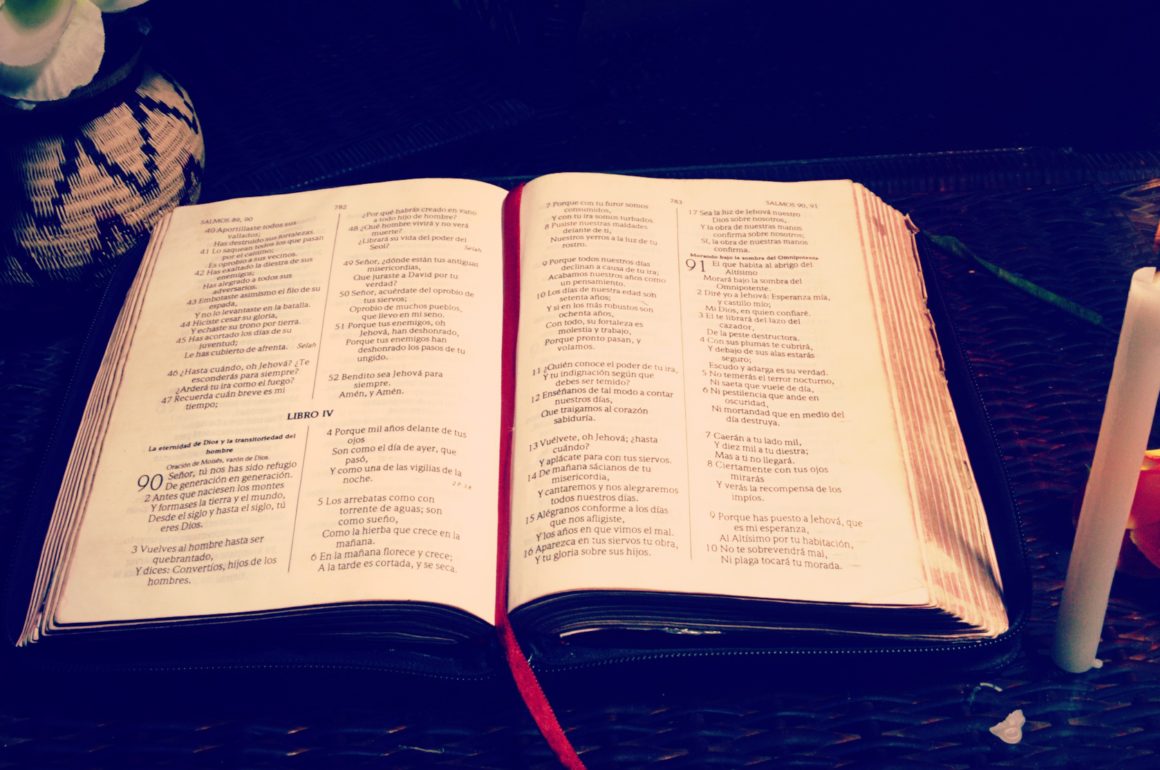Dwelling deeply with Scripture during Advent

We’ve introduced the idea of seeing time differently by living the Christian Year and we’ve touched on the season of Advent with its focus on the discipline of watching and waiting. Familiar faces from Scripture guide us during Advent into the heart of God. In the weeks leading up to Christmas, we will get to know Zechariah and Elizabeth, the parents of John the Baptist who knew what it was to wait in eager expectation of God’s saving work. We will get to know Mary and her astounding courage to walk into God’s plans for the world. We will hear from John the Baptist and several of the Prophets as they speak the words of God to Israel, painting vivid word pictures of what will surely come to pass.
As with all the seasons of the Christian Year, our experience of Advent is rooted in the experience of God’s people. Instead of merely reading and studying these figures, we seek to enter into their stories. We want to know them in an intimate, experiential way beyond mere head knowledge. Our goal is to stay with them long enough to let their faith become our faith. We open ourselves up, allowing God to touch us at the level of desire and imagination. And in so doing, God births in us anew the four great themes of Advent: hope, joy, peace, and love.
Prophetic Voices
Several of the Old Testament prophets figure in the Advent season, and none more prominently than Isaiah, the prophet most often quoted by the New Testament writers in defense of the gospel. Isaiah is a voice calling out to a stagnant Israel to turn from their dead worship rituals and to seek the heart of God wholly and fully. Isaiah calls out for God to break in on Israel, to disturb them from their comfortable rhythms of day to day life with no room for the love and beauty of God’s reign. He calls out for God to bring about the restoration of a broken people, suffering under the hand of oppression, economic disaster, political uncertainty, and the specter of war. We enter into these calls for God to come and intervene, praying them for our own time and the challenges we face as the people of God in a broken, lovelorn, and suffering world. In the writings of Isaiah, we learn the vocabulary of longing and remember what it is like to wait faithfully for God to do what only he can.
Zechariah and Elizabeth
The story of Zechariah and Elizabeth paints for us a vivid picture of 1st century Israel desperately awaiting the appearance of their Messiah. Here are two elderly saints, faithful to God for decades, waiting for the consolation of Israel and the fulfillment of Isaiah’s prophetic words. We’ll sense their deep longing for a child to call their own even though they were unable to conceive. Into this family God breaks in. They expected God to be true to his promises, but Zechariah reacts with jaded cynicism when he is told that his own life and work will be a part of that fulfillment, even beyond his wildest hopes. He learns to wait and finds enormous joy in the process.
Mary and Joseph
In contrast, young Mary greets the news of God’s messenger with quiet openness, unable to comprehend the scope of what is about to happen but willing to watch and to wait, ready for whatever will come. We learn Mary’s courage and her self-abandon, her willingness to be caught up in something that will change her life forever, taking her into fields of blessing she couldn’t possibly imagine, all the while unable to see two steps in front of her even as the promises of God are fulfilled before her eyes.
John the Baptist
The voice of John the Baptist is an Advent voice, calling out for people everywhere to prepare for the coming of the Holy One of Israel. With John, we clear away every obstacle and make clear every road for the approach of the One Who Comes, opening every part of our lives to the merciful judgment of God. We make ourselves ready to receive the fulfillment of the promises, watching for their approach and pointing to them as they appear.
Hope, Peace, Joy, and Love
The four themes of hope, peace, joy, and love are interwoven throughout these Scriptures and others we read during the season of Advent. We see a forward-looking hope in the words of the prophets amidst a suffering and exiled people. We see Zechariah and Elizabeth’s renewed hope for a son even after that hope had died. We see hope for the whole world in the open arms and heart of Mary, whose song looks forward to the fulfillment of all God’s promises. We see John the Baptist pointing to Jesus as the hope for a world lost in sin.
Hope is no hope at all without tangible expectation of change. And these texts point not just to some disembodied, abstract hope, but to one borne of actual peace. When they looked forward to the coming of the Messiah, Israel hoped for true justice, for reconciliation and renewed order among her people, for thriving lives and bountiful harvest, and for all the good things this world has to offer. The prophets speak boldly of a renewed creation at peace, one that does not hold back its blessing from those who till the soil and plant grapes. Zechariah and Elizabeth found the kind of peace that comes from God’s unexpected gifts meeting our hearts’ greatest desires. Mary sheltered in peace, treasuring the gift of God in quiet moments even as she knew that her son would suffer on his way to bringing lasting peace for the whole world. And John the Baptist preaches the path to peace with God and men: repentance and making way for Jesus.
Hope and peace bring with them a deep welling of joy from places in our hearts we did not know existed. The very words and vision of the prophets for a world restored stir us to joy, knowing that he who promises the coming new world is faithful. Zechariah and Elizabeth could know no greater joy than the the fulfillment of God’s promise to them and that they would play a part in the grand story of Israel’s salvation. Mary held her joy in her arms, marveling at God come into the world through her humble obedience. And when John the Baptist saw the birth of Jesus’ ministry, he himself said that his joy had made made full, seeing with his own eyes God’s kingdom come in power.
Hope, peace, and joy are realized when we are open to love. The prophets point toward a day when the love of all people shall be rekindled for God and for every person in their midst. Zechariah and Elizabeth released their son for his work, training him in love for the path he would walk. Mary took upon herself the task of caring and raising the incarnate son of God who entrusted himself fully to her. John the Baptist loved God, enabling him to step away from center stage to make room for the Messiah.
Advent in Accumulating Layers
These texts will come to us in slow layers, a piece here and a piece there through the readings that form the backbone of Advent. If we stick with the Book of Common Prayer or the daily readings of the Revised Common Lectionary, we will see these figures and others take us by little steps into a building anticipation of God’s Advent. We will experience this on three levels: first, in coming to know what it was like for our spiritual ancestors to experience the unfolding of these great events in the midst of their lives. Second, in coming awake to God’s promises in our life now, learning to live each moment in anticipation of God’s coming to us in a new way as we open ourselves to him. And third, in learning to live with a future orientation, coming to know in the deepest part of ourselves that our future is secure and that a better world is coming with each passing day.
Up next, we’ll discuss some ideas for ways we can arrange our devotions for the celebration of Advent.









Leave a Comment